Gaetano Donizetti (1797–1848) composed three operas often grouped as his “Tudor Queens” series: Anna Bolena (1830), Maria Stuarda (1835), and Roberto Devereux (1837). They represent some of the finest examples of bel canto writing, blending historical intrigue with dramatic storytelling and vocal virtuosity.
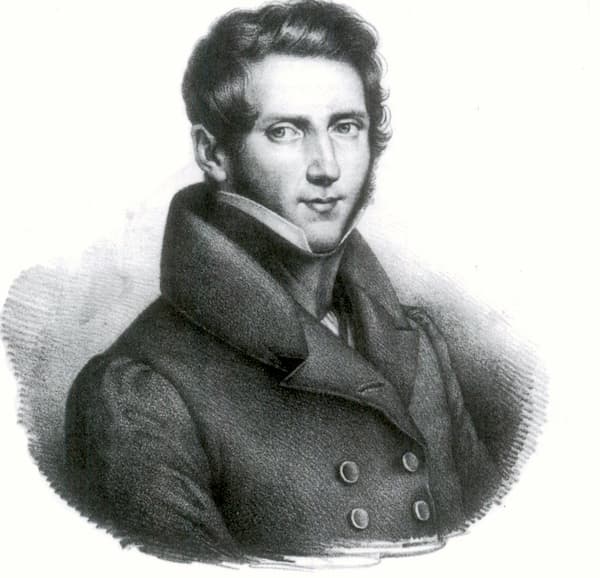
Gaetano Donizetti
Donizetti had already composed in the region of 30 operas, however, his national and international reputation was firmly established with his 31st effort, the opera Anna Bolena. It turned out to be a game-changer, as Donizetti “cast off the long shadow of Rossini.”
The “Tudor Queens” trilogy marked a significant phase in his career, and to commemorate Donizetti’s passing on 8 April 1848, let us explore the stories of the Tudor queens as reimagined through music.
Gaetano Donizetti: Roberto Devereux, “Ouverture”
Tudor Fascination
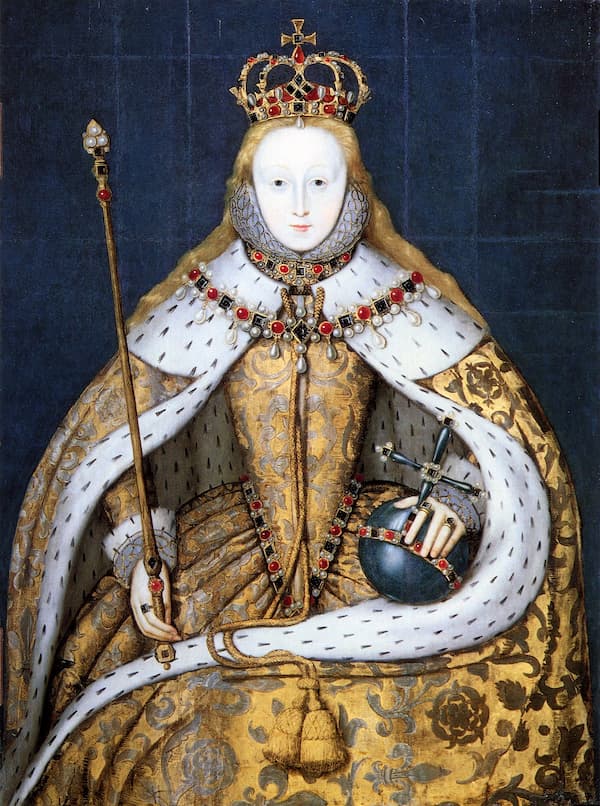
Queen Elizabeth I
The Tudor period occurred between 1485 and 1603 in England and Wales, and included the Elizabethan period during the reign of Elizabeth I. It was a period of profound political, religious, and cultural transformations that shaped England. Famously, it included the English Reformation, the rise of the Royal Navy, and the flourishing of the English Renaissance.
Historically, the Tudor dynasty changed England from a small, obscure island to one of Europe’s largest powers. Given such dramatic changes, it is hardly surprising that it was a period of political machinations, romantic entanglements, and larger-than-life personalities.
The Tudor’s appeal in the 19th century wasn’t just about history but it mirrored the era’s own anxieties about monarchy, religion, and national identity. These often appeared in historical novels, plays, and poetry, and also provided fertile grounds for operatic drama.
Gaetano Donizetti: Anna Bolena, “Come innocente giovane”
Anna Bolena
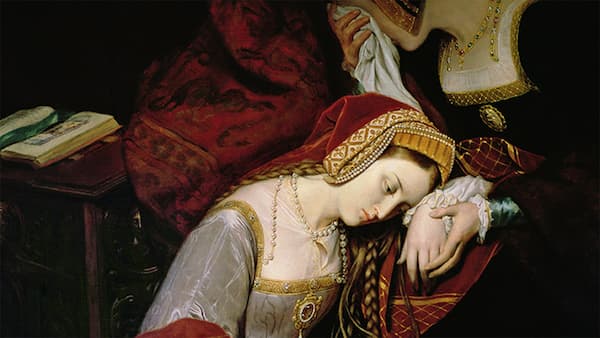
Anne Boleyn
The story of Anne Boleyn, the second wife of King Henry VIII of England, was a compelling choice for an opera. Her dramatic life, her rise from a noblewoman to queen, her tumultuous marriage to Henry, and her tragic execution in 1536 on charges of adultery, incest, and treason, offered a potent mix of passion, intrigue, and pathos.
Donizetti’s first Tudor Queen turned out to be more fictional than factual, reflecting a tendency to romanticise history. The libretto by Felice Romani drew inspiration from historical plays rather than rigorous historical accuracy.
Gaetano Donizetti: Anna Bolena, “Piangete voi?… Al docle guidami”
In the opera, Anne is depicted as a tragic, emotionally volatile figure, consumed by jealousy, guilt and paranoia. Her famous aria “Al dolce guidami” shows her descending into a kind of madness, reminiscing about her past and pleading for mercy. The opera emphasises her as a wronged queen, tormented by her husband’s infidelity with Jane Seymour.
In his musical portrayal, Donizetti leans heavily on bel canto conventions, composing long and expressive melodies, dramatic duets, and showy vocal fireworks. Anna’s music is not meant to reflect the sharp, political, and resilient personality of the real Anne Boleyn, but a romanticised idea of a fallen queen. Her arias often follow a conventional two-part cantabile and cabaletta structure, turning Anne into a timeless, suffering heroine.

Giuditta Pasta in the role of Anne Boleyn
Let us not forget that Donizetti composed Anna Bolena for the celebrated soprano Giuditta Pasta, whose extraordinary vocal range and dramatic intensity decisively shaped the role of Anna. Pasta’s ability to handle florid passages and convey deep emotion influenced Donizetti’s decision to craft a score that showcased her talents, particularly in the opera’s climactic mad scene. This scene, blending lyrical beauty and psychological depth, became a hallmark of bel canto opera.
Gaetano Donizetti: Anna Bolena, “Coppia iniqua”
Maria Stuarda

Maria Stuarda
Maria Stuarda premiered on 30 October 1835 at the Teatro alla Scala in Milan. The libretto was written by Giuseppe Bardari and was based on the play Maria Stuart by Friedrich Schiller. The work was originally intended as a vehicle for Donizetti’s favourite prima donna, Maria Malibran, but it encountered significant censorship issues due to its politically sensitive content.
The opera focuses on the rivalry between Mary Stuart, the Catholic Queen of Scotland, and Elizabeth I, the Protestant Queen of England. Authorities deemed the depiction of one queen condemning another as too provocative, and subsequent performances were heavily edited or banned outright.
Gaetano Donizetti: Maria Stuarda, “Ah! Quando all’ara scorgemi”
The opera is most famous for its fictional confrontation scene, culminating in Mary’s condemnation and execution. This fictional meeting, a highlight of the work, is one of the most intense scenes in bel canto opera, showcasing the emotional and vocal demands of the genre.
Elizabeth is depicted as an authoritative, conflicted, and volatile figure. Her music reflects her power as a ruler, her insecurity, and her jealousy over Leicester’s love for Mary. In the confrontation scene, her lines are aggressive and rhythmically intense, with rising chromatic passages that mirror her escalating anger. When she signs Maria’s death warrant, her music blends triumphant resolution with a brittle edge, hinting at her moral unease.
Gaetano Donizetti: Maria Stuarda, “Confrontation Scene”
Mary, on the other hand, is portrayed as a tragic and noble heroine. Her music is more lyrical and introspective than Elizabeth’s, emphasising her vulnerability, dignity and ultimate transcendence through martyrdom. We first see her in a nostalgic reflection on her lost freedom, set to a gentle, flowing melody accompanied by soft winds and strings.
In her clash with Elizabeth, Mary begins with restraint, her music is hesitant and pleading. But as Elizabeth provokes her, Mary’s defiance erupts in the explosive “Vil bastarda” insult, and a sudden shift to a fiery and declamatory style with rapid runs and a piercing high note.
Mary’s music reaches its emotional peak in her final prayers. Sung as she prepares for execution, the serene and hymn-like melody soars to a fantastic climax. The melody is frequently set in a major key, symbolising her spiritual triumph and acceptance of her fate. Donizetti’s orchestration is sparse, featuring harp or soft strings, enhancing the scene’s poignancy. The opera only gained widespread recognition in the 20th century, and the clash of the two queens remains an enduring draw.
Gaetano Donizetti: Maria Stuarda, “Ah! Se un Giorno de queste ritorte” (Carmela Remigio, soprano; Joseph Calleja, tenor; Riccardo Zanellato, bass; Circuito Lirico Regional Chorus; Fondazione Orchestra Gaetano Donizetti di Bergamo; Fabrizio Maria Carminati, cond.)
Roberto Devereux

Roberto Devereux
Composed to a libretto by Salvadore Cammarano, Roberto Devereux premiered on 28 October 1837 in Naples. For scholars and critics, it is one of Donizetti’s finest works in the bel canto style. The opera is loosely based on the historical figure Robert Devereux, 2nd Earl of Essex, and his relationship with Queen Elizabeth I of England.
The opera centres on the final days of Roberto, who was executed for treason in 1601 after a failed rebellion. This historical event is transformed into a romantic and emotional tragedy, emphasising Elizabeth’s conflicted love for Roberto and her ultimate decision to condemn him. While the real Elizabeth and the Earl of Essex had a complex, likely platonic relationship marked by political tensions, the opera imagines a passionate and personal betrayal.
Gaetano Donizetti: Roberto Devereux “L’amor suo me fe’ beata”
The plot sees Roberto returning from a failed military campaign in Ireland, facing accusations of treason. Elizabeth, who loves him, offers clemency if he proves his loyalty, but she suspects he is unfaithful. And she is correct, as Roberto is in love with Sara, the wife of his friend Nottingham. A misunderstanding involving a ring given by Elizabeth and a scarf belonging to Sara sees Elizabeth signing Roberto’s death warrant.
Donizetti portrays Elizabeth as a multifaceted character, regal yet vulnerable, authoritative yet emotionally fragile, and ultimately consumed by jealousy, rage and remorse. As the central character in the opera, her character is crafted through a combination of vocal writing, melodic structure, and orchestration that reflects her complex psychological journey.
Elizabeth’s first appearance begins with a lyrical and almost tender melody, accompanied by light strings and woodwinds, reflecting her initial hope that Roberto still loves her. However, as doubts about Robert’s loyalty surface, the music transitions into a more agitated cabaletta with rapid scales and minor-key undercurrents, signalling her growing anxiety and possessiveness.
Gaetano Donizetti: Roberto Devereux, “Vivi, ingrate”
In the pivotal scene where Elizabeth condemns Roberto, her music is forceful and resolute. It has a martial quality with brassy fanfares and driving rhythms underscoring her decision. However, there is an edge of brittleness, with sudden dynamic shifts and dissonant harmonies hinting at her inner conflict.
The cabaletta “Vivi, ingrato, a lei d’accanto” is a tour de force of rage and scorn, featuring cascading runs and high notes that demand virtuosic control, portraying her as a queen exacting vengeance. This moment captures Elizabeth at her most powerful and punitive, yet the cracks in her composure suggest that her triumph is hollow.
Elizabeth’s mood shifts dramatically after Roberto’s execution. The tempo slows, and the melody becomes a mournful, fragmented lament in a minor key, accompanied by a sparse and haunting orchestration. Her vocal line loses much of its earlier bravura, descending into guilt and loneliness. The opera ends with her vision of Roberto’s blood and her abdication, set to a chilling, almost ghostly soundscape that fades into silence.
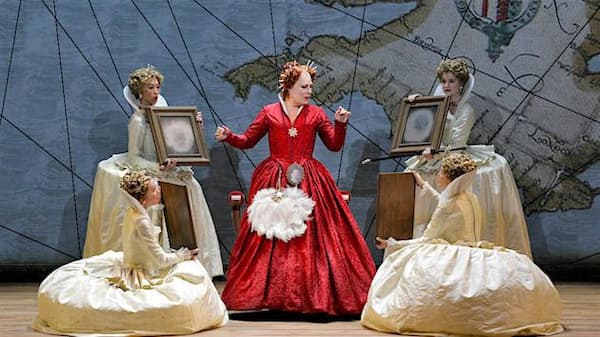
Roberto Devereux, San Francisco Opera production
Roberto Devereux is often seen as the most mature of the Tudor trilogy operas, written at the height of Donizetti’s career. It balances virtuosic vocal demands with a tighter dramatic structure and richer orchestration, reflecting Donizetti’s evolution as a composer. The exploration of love, betrayal, and power, all culminating in Elizabeth’s tragic solitude, makes it a most powerful conclusion to his Tudor-themed works.
Gaetano Donizetti: Roberto Devereux, “Quel sangue versato” (Sondra Radvanovsky, soprano; Chicago Lyric Opera Chorus; Chicago Lyric Opera Orchestra; Riccardo Frizza, cond.)
Tudor Prequel

Gaetano Donizetti: Il castello di Kenilworth – title page of the libretto – Naples 1829
Before embarking on his Tudor Queen trilogy, Donizetti had already dabbled in the Tudor realm with his melodrama serio Il castello di Kenilworth, premiered on 6 July 1829. The opera is based on Sir Walter Scott’s 1821 novel Kenilworth, and centres on the romanticised relationship between Robert Dudley, the Earl of Leicester, and Elizabeth I.
As Elizabeth is preparing to visit Kenilworth Castle, Roberto, who has secretly married Amelia, needs to hide his wife to avoid the queen’s wrath. He entrusts her to his equerry Warney, who tries to seduce her and, when rebuffed, seeks revenge. Amelia escapes, meets Elizabeth, and reveals her marriage. After a web of deception, Elizabeth uncovers the truth and pardons the couple. This final twist represents a stark departure from Scott’s tragic conclusion.
Gaetano Donizetti: Il castello di Kenilworth, “In estasi soave è l’alma” (Jessica Pratt, soprano; Donizetti Opera Choir; Donizetti Opera Orchestra; Riccardo Frizza, cond.)
For scholars, this opera reflects Donizetti’s early mature style, “blending Rossinian flourishes with his emerging bel canto dramatic sensibility. Elizabeth is a regal yet somewhat static figure. Both Donizetti and his librettist Andrea Leone Tottola present Elizabeth as a plot catalyst rather than a fully fleshed-out character. Her music reflects her external impact, commanding loyalty, inspiring fear, granting mercy, rather than internal struggle.
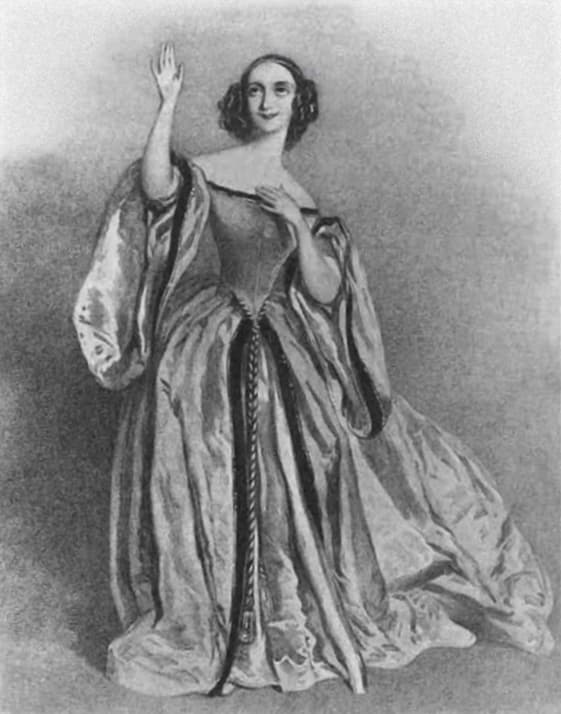
Fanny Tacchinardi Persiani as Lucia in the London premiere of Lucia di Lammermoor
It’s probably not surprising that the most famous aria of the opera is actually assigned to Amelia, glass harmonica included. In what is sometimes referred to as her “mad scene,” Donizetti showcases his bel canto mastery with a soaring melody that demands both technical precision and expressive pathos. She believes herself betrayed and facing danger, and her vocal line is both florid and haunting. It is hardly surprising that this aria is frequently described as a precursor to the more famous mad scenes in Donizetti’s Lucia di Lammermoor.
Gaetano Donizetti: Il castello di Kenilworth, “Par che mi dica ancora”
Final Thoughts
Donizetti’s fascination with Tudor history produced a series of operas that vividly dramatise the lives of England’s 16th-century monarchs and their courts. These works, rooted in the bel canto tradition, blend historical intrigue with emotional intensity and showcase the composer’s evolving skill in crafting complex characters through soaring melodies and virtuosic vocal writing. While Il castello di Kenilworth features Queen Elizabeth I as a regal and benevolent figure, the trilogy delves deeper into psychological and political turmoil.
The Tudor trilogy stands as a pinnacle of Donizetti’s career. It was written during a period when compositional mastery, dramatic insight and vocal innovation converged to produce some of the most enduring works in the bel canto repertoire. Written during his tenure as a leading figure in Italian opera, the Tudor operas find Donizetti at his most prolific and ambitious, cementing his international fame and legacy.
For more of the best in classical music, sign up for our E-Newsletter
